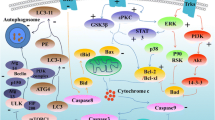Abstract
Acupuncture is useful in treating the nausea and vomiting related to chemotherapy, adult postoperative surgery pain and postoperative dental pain. We obtained single-photon emission computed tomography (SPECT) brain perfusion images of six patients with middle cerebral artery occlusion obtained before and after acupuncture and compared the changes in regional cerebral blood flow (rCBF) to those in normal control. Images were obtained before and after acupuncture at six traditional acupoints (LI 4, 10, 11, 15 and 16 and TE5) in the affected arm. The baseline image was subtracted from the postacupuncture image, to produce a subtraction image displaying only voxels with values >2 SD from the mean and those voxels were coregistered to the baseline SPECT or T2-weighted MRI. Similar images were obtained before and after acupuncture of eight normal volunteers. Statistical parametric mapping with a threshold of P =0.001 and a corrected P of 0.05 was performed for group comparison between postacupuncture and baseline SPECT. Focally increased CBF was seen in all patients especially in the hypoperfused zone surrounding the ischaemic lesion, the ipsilateral or contralateral sensorimotor area, or both. Normal subjects showed increased rCBF mainly in the parahippocampal gyrus, premotor area, frontal and temporal areas bilaterally and ipsilateral globus pallidus. Acupuncture stimulation after stroke patients appears to activate perilesional or use-dependent reorganised sites and might be a way of looking at brain reorganisation.




Similar content being viewed by others
References
Anon (1998) NIH Consensus Conference. Acupuncture. JAMA 280: 1518–1524
Wu MT, Hsieeh, JC, Xiong J, et al (1999) Central nervous pathway for acupuncture stimulation: Localization of processing with functional MR imaging of the brain—preliminary experience. Radiology 212: 133–141
Hui KKS, Liu J, Makris N, et al (2000) Acupuncture modulates the limbic systems and subcortical gray structures of the human brain: evidence from fMRI in normal subjects. Hum Brain Map 9: 13–25
Biella G, Sotgiu ML, Pellegata G, et al (2001) Acupuncture produces central activations in pain regions. Neuroimage 14: 60–66
Cho ZH, Chung SC, Jones JP, et al (1999) New findings of the correlation between acupoints and corresponding brain cortices using functional MRI. Proc Nat Acad Sci 95: 22670–2673
Hu HH, Chung C, Liu TJ, et al (1993) A randomized controlled trial on the treatment for acute partial ischemic stroke with acupuncture. Neuroepidemiology 12: 106–113
Johansson K, Lindgren I, Widner H, et al (1993) Can sensory stimulation improve the functional outcome in stroke patients? Neurology 43: 2189–2192
.Kjendahl A, Sallstrom S, Osten PE, et al (1997) A one year follow-up study on the effects of acupuncture in the treatment of stroke patients in the subacute stage: a randomized, controlled study. Clin Rehab 11: 192–200
Wong AMK, Su TY, Tang FT, et al (1999) Clinical trial of electrical acupuncture on hemiplegic stroke patients. Am J Phys Med Rehabil 78: 117–122
Gosman-Hedstrom G, Claesson L, Klingenstierna U, et al (1998) Effects of acupuncture on daily life activities and quality of life. A controlled, prospective, and randomized study of acute stroke patients. Stroke 29: 2100–2108
Johansson B, Haker E, vonArbin M, et al (2001) Acupuncture and transcutaneous nerve stimulation in stroke rehabilitation: a randomized, controlled trial. Stroke 32: 707–713
O'Brien TJ, So EL, Mullan BP, et al (1999) Subtraction SPECT co-registered to MRI improves postictal SPECT localization of seizure foci. Neurology 52: 137–146
Han JS (2003) Acupuncture: neuropeptide release produced by electrical stimulation of different frequencies. Trends Neurosci 26: 17–22
Chen XH, Geller EB, Adler MW (1996) Electrical stimulation at traditional acupuncture sites in periphery produces brain opioid-receptor-mediated antinociception in rats. J Pharmacol Exp Ther 277: 654–660
Weiller C, Rijntjes M (1999) Learning, plasticity, and recovery in the central nervous system. Exp Brain Res 128: 134–138
Witte OW (1998) Lesion-induced plasticity as a potential mechanism for recovery and rehabilitation training. Curr Opin Neurol 16: 655–662
Jones TA, Schallert T (1992) Overgrowth and pruning of dendrites in adult rats recovering from neocortical damage. Brain Res 581: 156–160
Jones TA, Kleim JA, Greenough WT (1996) Synaptogenesis and dendritic growth in the cortex opposite unilateral sensorimotor cortex damage in adult rats: a quantitative electron microscopic examination. Brain Res 733: 142–148
Flor H, Elbert T, Knecht S, et al (1995) Phantom-limb pain as a perceptual correlate of cortical reorganization following arm amputation. Nature 375: 4822–484
Chollet F, DiPiero V, Wise RJS, et al (1991) The functional anatomy of motor recovery after stroke in humans: a study with positron emission tomography. Ann Neurol 29: 63–71
Cramer SC, Nelles G, Benson RR, et al (1997) A functional MRI study of subjects recovered from hemiparetic stroke. Stroke 28: 2518–2527
Nelles G, Jentzen W, Jueptner M, et al (2001) Arm training induced brain plasticity in stroke studied with serial positron emission tomography. Neuroimage 13: 1146–1154
Shishido F, Uemura K, Murakami et al (1994) Cerebral uptake of99m Tc-bicisate in patients with cerebrovascular disease in comparison with CBF and CMRO2 measured by positron emission tomography. J Cereb Blood Flow Metab 14 [Suppl 1]: S66–S75
Acknowledgements
This study was supported by the Brain Korea 21 Project for Medical Science.
Author information
Authors and Affiliations
Corresponding author
Rights and permissions
About this article
Cite this article
Lee, J.D., Chon, J.S., Jeong, H.K. et al. The cerebrovascular response to traditional acupuncture after stroke. Neuroradiology 45, 780–784 (2003). https://doi.org/10.1007/s00234-003-1080-3
Received:
Accepted:
Published:
Issue Date:
DOI: https://doi.org/10.1007/s00234-003-1080-3




